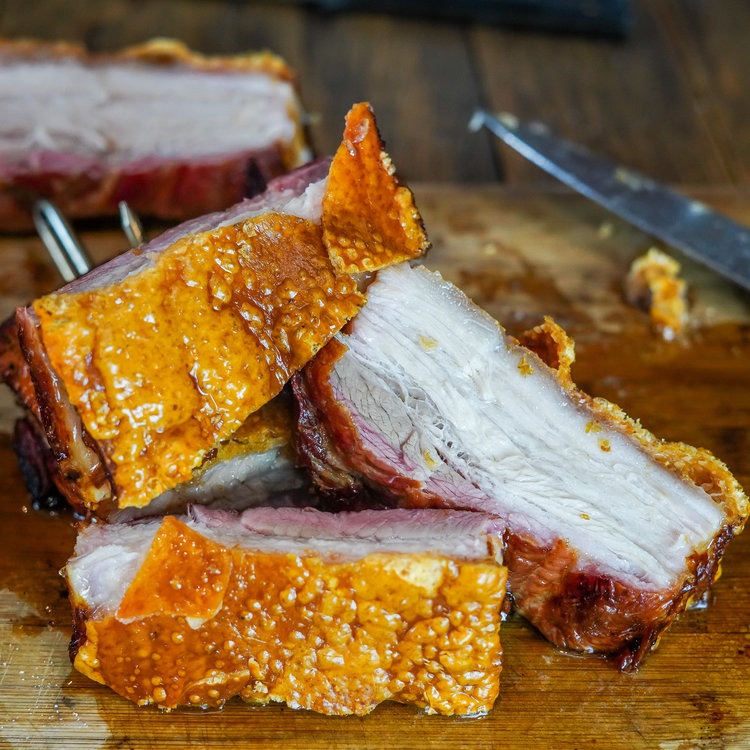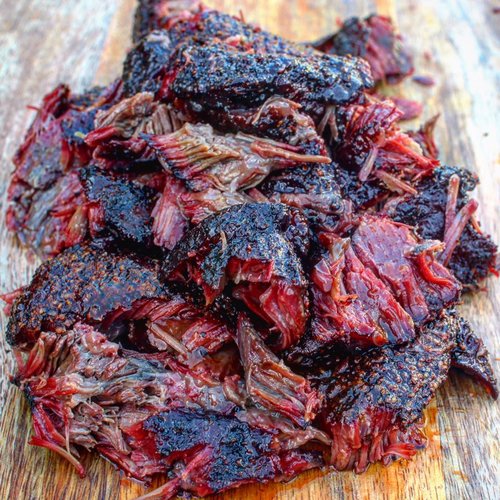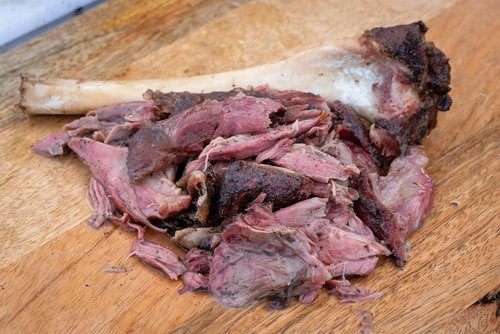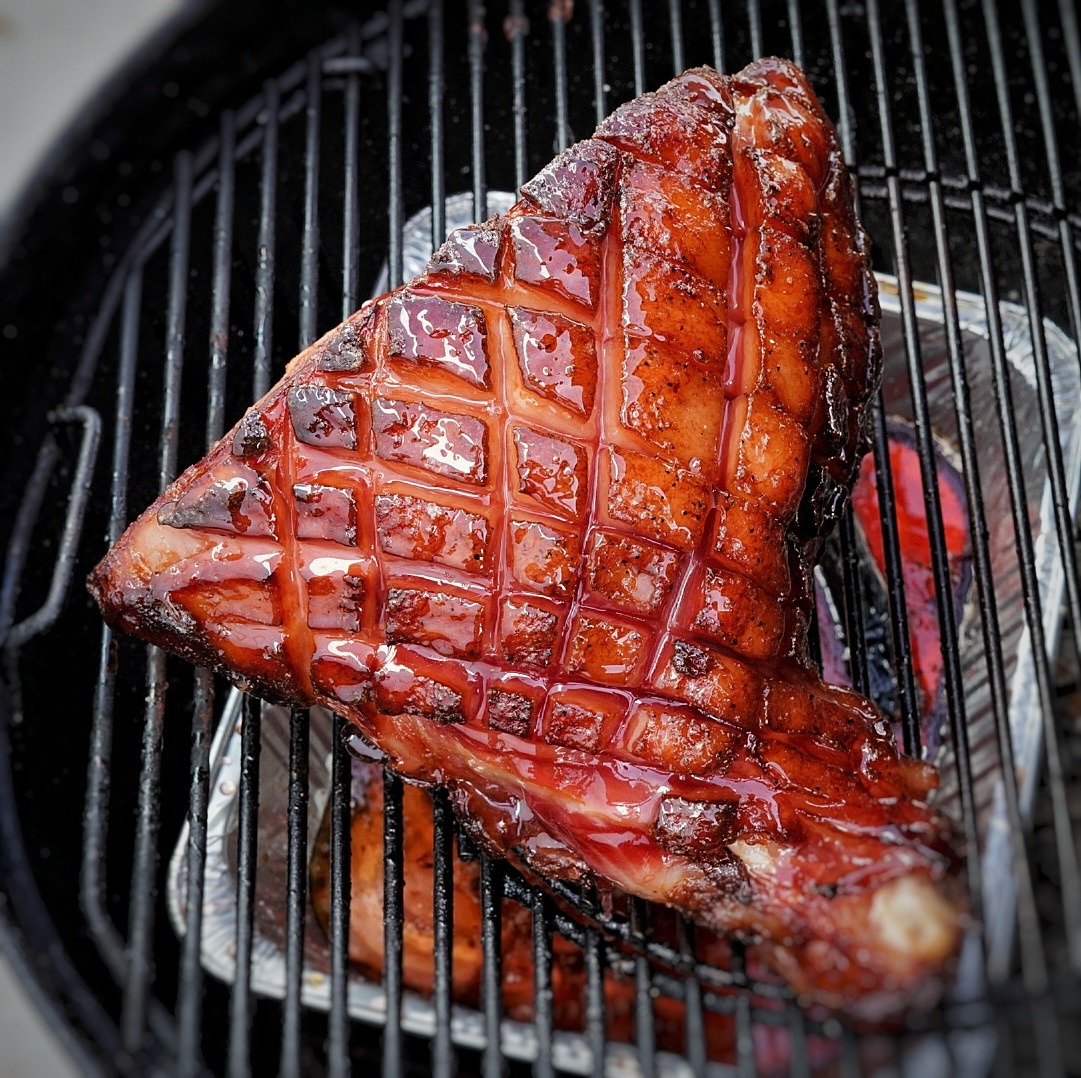
Following on from our Weber Kettle Roast Pork article I thought we would continue exploring the perfect pork crackling as it’s a topic that deserves our ongoing attention.
This time we have changed the cut and changed the barbecue to give you more tools to have up your sleeve in the quest for crackle.
For this cook we chose pork belly from Linley Valley Pork and used the Fornetto Razzo AKA the red rocket.
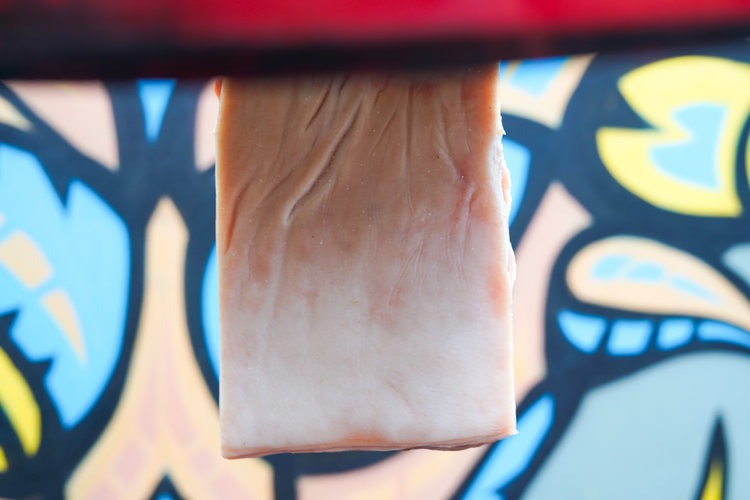
Follow the same drying methods we cover in the first article, remembering that dry skin and high heat are the two key components to perfect crackle. We started this one around 36 hours prior – it had been in vac seal for a while as it was leftover from a class so had our work cut out for us.
The difference in method is we are opting to hang the pork belly for our cook. Pork belly, being flat, can pool rendering fats on top of the skin which inhibits crackle. Hanging it allows us to employ gravity to help us get that perfect crackle. If doing this in your Weber kettle you would need to employ a method to ensure fat cannot pool on top.
The hanging method is essentially a poor man’s rotisserie, the hot fat drips down to help crisp and crunch that skin up for that golden toffee crackle.
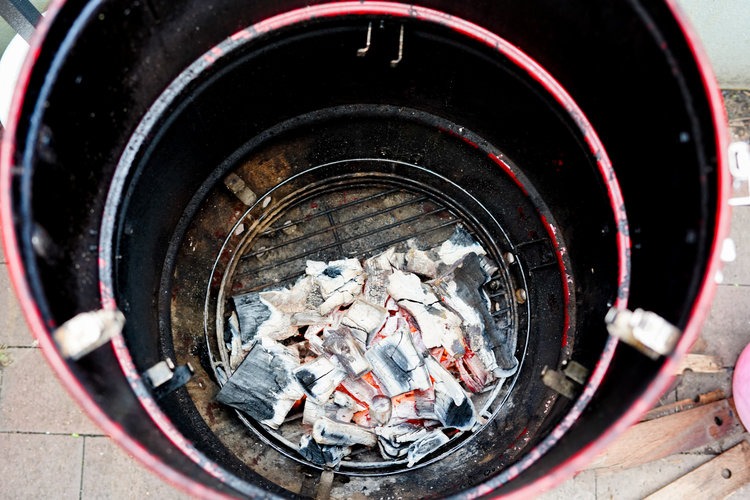
Set your bullet smoker for high heat (around 450f / 230c), removing the water pan as we want to take advantage of some of that radiant heat from the charcoal. Whether you’ve got a Fornetto, Pro Q or Weber Smokey Mountain the set up will be the same, you may just need to vary the amounts of fuel to cater to size.
We used mallee lump charcoal for its high heat output, positioning it to one side of the charcoal basket as we want to try and direct as much of that radiant heat towards the skin as we can.
Once the Fornetto hit 450f we hung our pork belly from the top rail, with the skin facing the hotter side of the barbecue.
For this cook we are using skin as our main determinant for doneness; I would be surprised if you had perfect crackle and undercooked belly, but for food safety purposes the meat should be around 60c internal (140f).
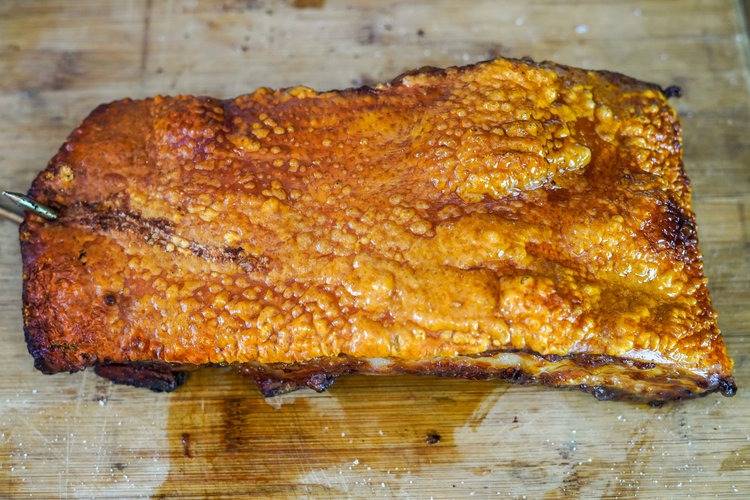
The time for this cook was approximately one hour 15 minutes – as with all things barbecue, your times will vary so don’t try to stick to a prescribed time – take it off when you’re happy with the crackle!
When cooked at high heats, meats can benefit from a slight rest – I don’t have a hard and fast rule, I usually just carve it up once I’ve finished taking photos.
Do you have any great crackle tips? Let me know!
